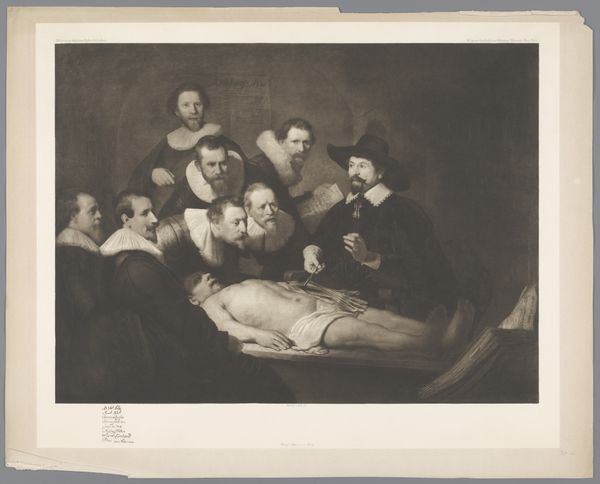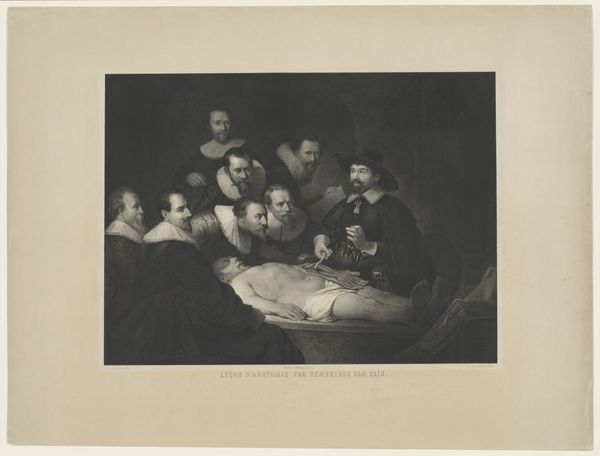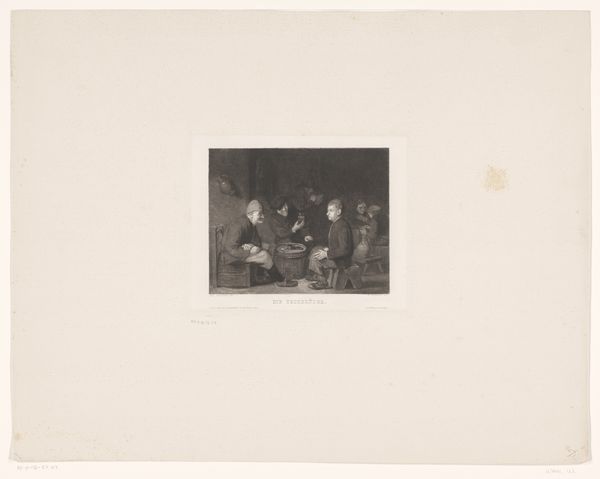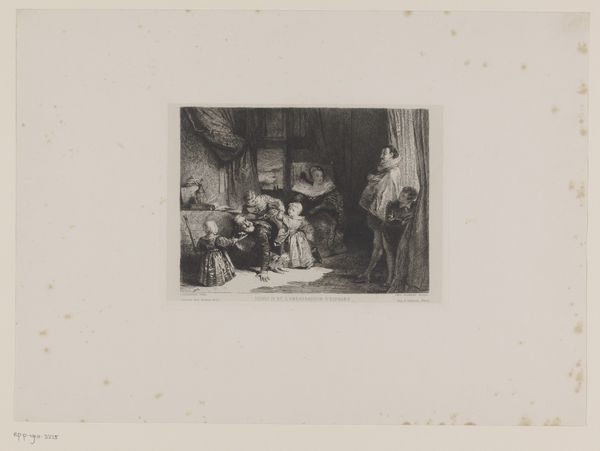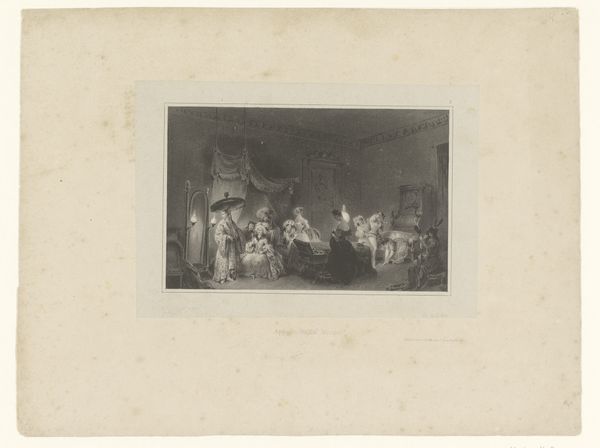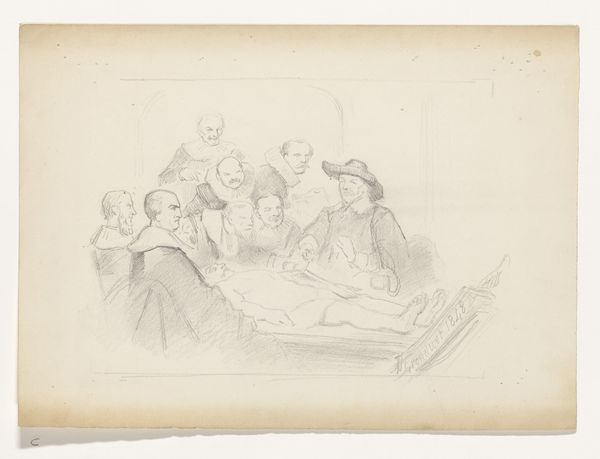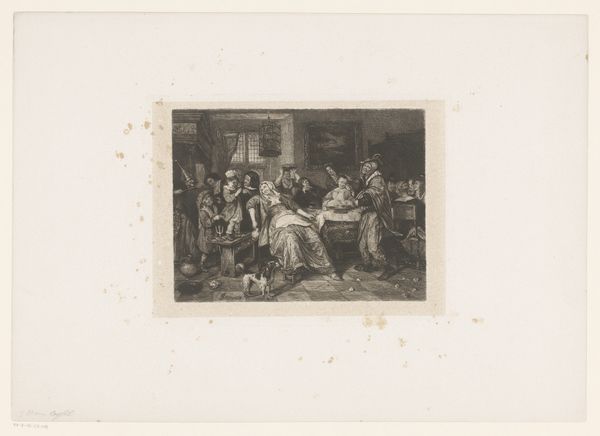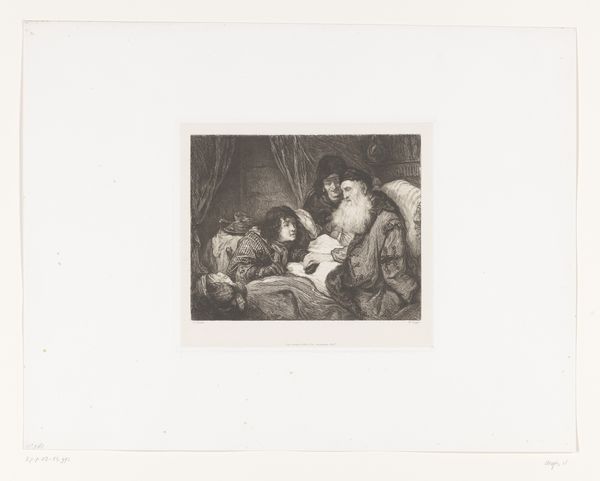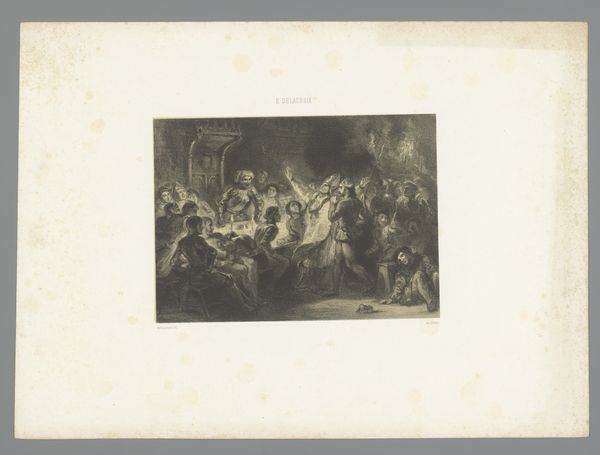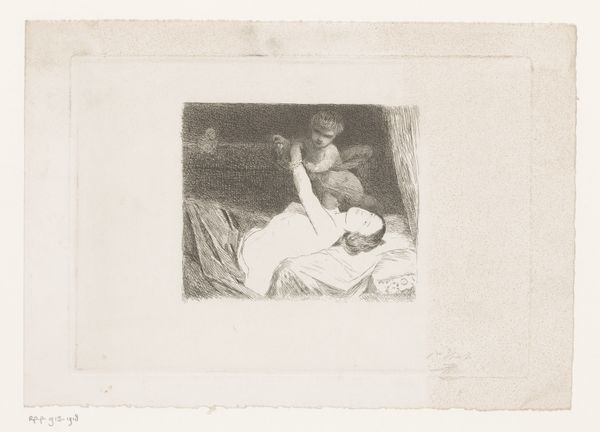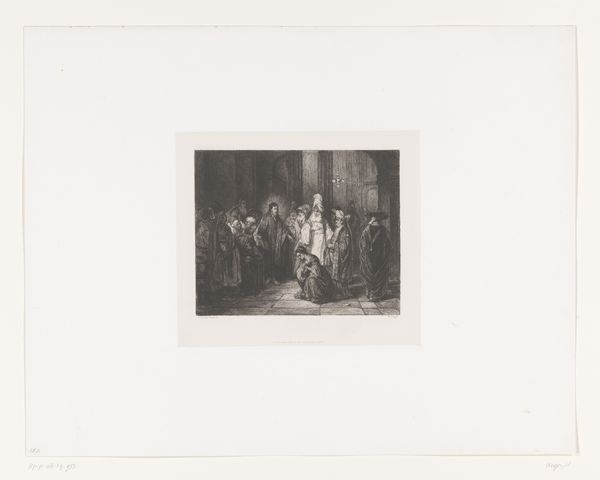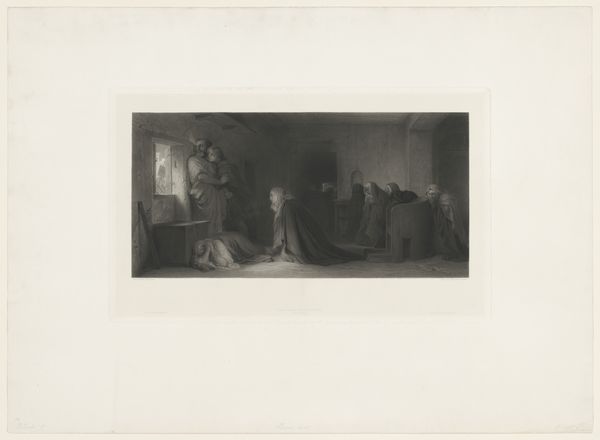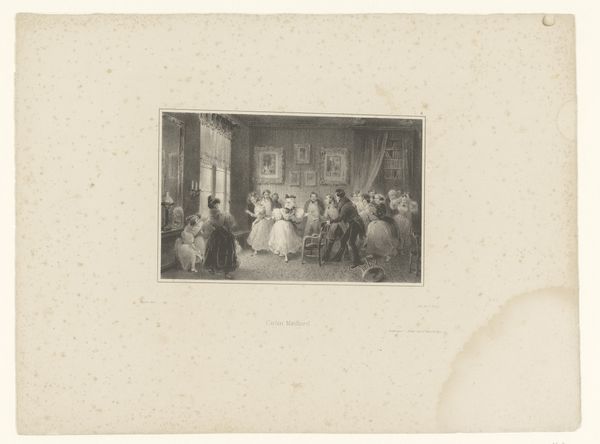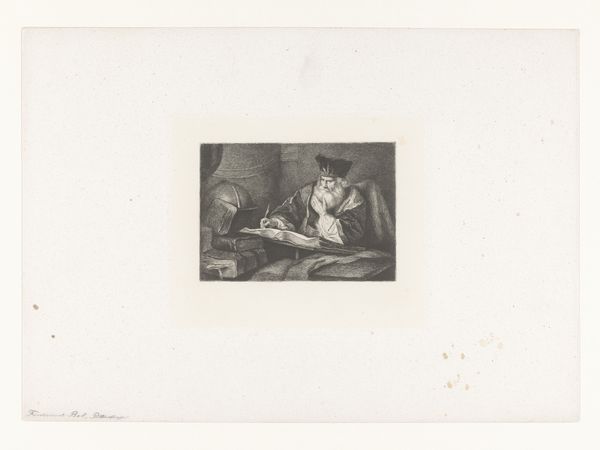
Dimensions: height 215 mm, width 262 mm
Copyright: Rijks Museum: Open Domain
William Unger etched "The Anatomy Lesson of Dr. Nicolaes Tulp," capturing a pivotal moment in medical history. The central motif is the exposed human body, a symbol of knowledge but also of mortality. Consider the hand being dissected: This recalls images of martyrdom, where the body becomes an object of study and reverence. Think of Saint Sebastian, whose body, pierced by arrows, transforms into a map of human suffering and endurance. In both cases, the body conveys complex ideas about knowledge, pain, and the limits of human existence. There’s a powerful emotional tension in the image, almost like a sacred ritual. The act of dissection itself becomes a psychological exploration of the unknown, tapping into our deepest fears and curiosities about what lies beneath the surface. The image has resurfaced over time, evolving from sacred to secular, but always retaining that primal connection to the human condition.
Comments
No comments
Be the first to comment and join the conversation on the ultimate creative platform.
